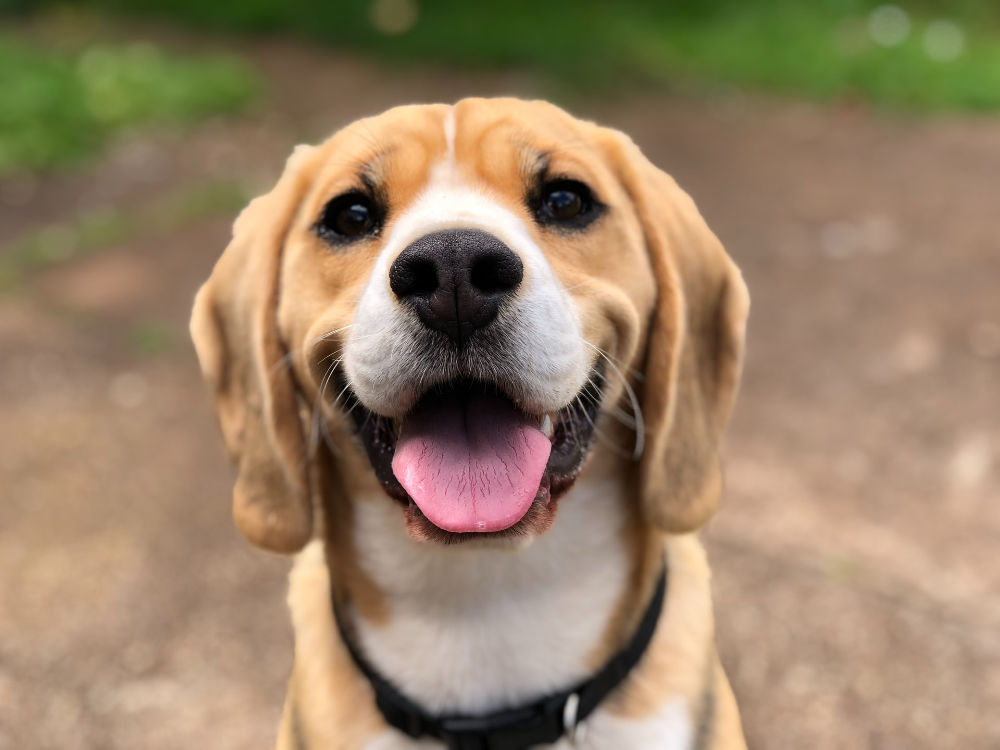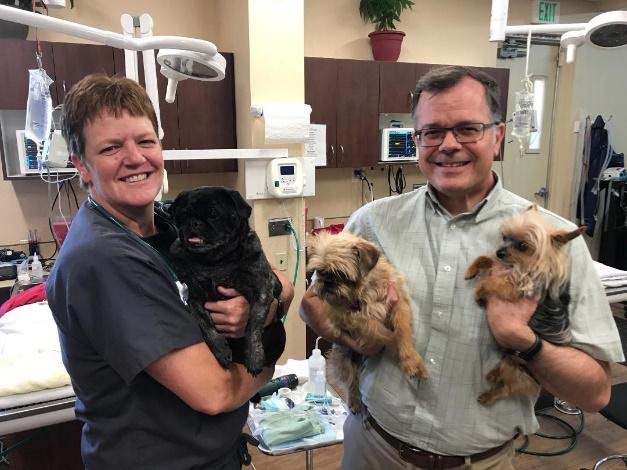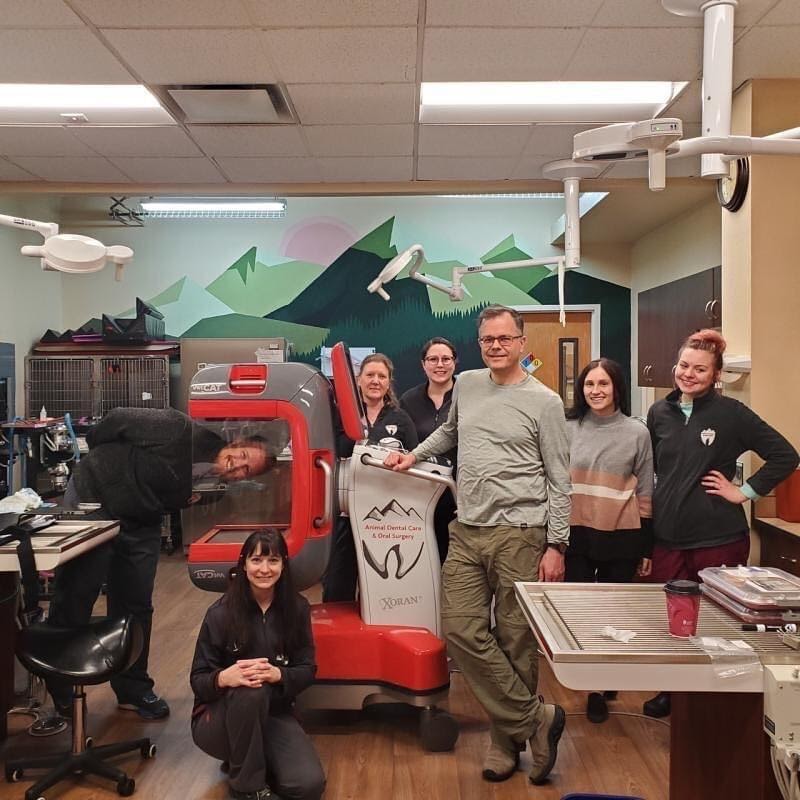
30 Jun Why The Cost of Veterinary Dental Care Is Worth It
Soon after I graduated from The Ohio State University’s College of Veterinary Medicine in 1992 my first boss told me that it was impossible to provide quality veterinary care and have it be inexpensive. As our profession has progressed and the standards of care have grown exponentially over the past 30 years, this has proven to be true on so many levels. Perhaps no discipline has been more impacted by this than veterinary dentistry.
Why the cost of dog and cat dental care is worth it.
Pre-Procedure
It truly takes a team to care for a pet from the time it is admitted to our clinic to the time they are discharged later in the day. It is an accurate estimate that multiple staff members spend 4-8 hours of any given day with an individual patient. A minimum of four team members, and usually more, are directly involved with each patient.
Prior to admission a client care provider most often answered a phone call or email and helped a client schedule a consultation and possibly a procedure for their pet. Upon arrival a veterinary technician or assistant admits the pet and spends time answering the client’s questions and completing admission paperwork—we have an extensive checklist that the team member and pet owner complete to be sure we have all the needed information to care for their pet.
The technician then takes the vital signs of the pet. This includes body temperature, heart rate and respiratory rate. All of this information is then communicated to the doctor who then meets with the client and performs an examination of their pet. The doctor then discusses the best route of treatment and shares this with a staff member who then puts together a treatment plan that will include the cost of any advised procedures. If the pet owner and doctor agree that a procedure is needed, the pet may be admitted or have the procedure scheduled for another day.
Admission & Treatment
After a patient is admitted to Animal Dental Care and Oral Surgery, a pre-anesthetic blood sample is drawn by a trained team member so that a complete blood count, electrolytes and chemistry panel can be performed. This requires multiple different supplies including syringes and collection tubes—not to mention in-hospital lab machines that cost tens of thousands of dollars to purchase and maintain. A pre-anesthetic blood panel is mandatory prior to a procedure to ensure the pet’s organ systems are functioning normally and that they are a good candidate for anesthesia and surgery.
Once the pre-anesthetic blood panel is completed a pre-medication is given to the patient to help sedate them. This often an opioid combined with other sedatives and analgesics that decrease pain and anxiety prior to starting the procedure.
Approximately 20-30 minutes later an IV catheter is placed. The patient is pre-oxygenated and their vital signs are repeated in addition to checking their blood pressure, electrocardiogram and pulse oximetry. If all is within normal and stable ranges, the patient is then induced with another anesthetic drug and intubated so that they can receive oxygen and anesthetic gas throughout the procedure.
Before, during and after the procedure, the pet is hooked up to numerous different anesthetic monitoring devices that monitor heart rate, respiratory rate, body temperature, blood pressure, pulse oximetry, capnography, and electrocardiography. They are always on a body warming device that circulates warm air around them to help maintain their body temperature at a safe level.
Post-Procedure
A patient is closely monitored for a number of hours after a procedure before they are discharged to be sure they have safely recovered from anesthesia. Post-operative medications and discharge instructions are completed. The pet owner is called multiple times throughout the day to update on the pet’s status and arrange a discharge time.
The Highest-Quality Veterinary Dental Care
Hearing this helps us realize that each of our patients are surrounded by hundreds of thousands of dollars of medical devices and supplies that allow us to safely perform a dental procedure. However, all of the equipment and medications are worthless without trained professionals who know how to use them at a high level of expertise.

Figure 1 Dr. Patrick Vall and some of his fellow team members with Brutus, their cone beam computed tomography unit!
Animal Dental Care and Oral Surgery always has at least two certified veterinary technicians and/or assistants who are directly responsible for each patient before, during and after their anesthetic procedure.
One is dedicated to the anesthetic care of the pet, while the other is responsible for dental care. Each of them is highly-trained and under the supervision of a board-certified veterinary dentist or resident in the American Veterinary Dental College. All of these professionals need to be fairly compensated for their level of expertise and the years of training and expense they incurred to be experts in their field.
Advanced Anesthesia Care
Some of our patients are dealing with other serious health issues, such as heart or kidney disease, but still need dental care requiring anesthesia. For many of these cases, we utilize the services of Kim Spelts, CVT VTS from Peak Veterinary Anesthesia Services. Kim is a Certified Veterinary Technician and Veterinary Trained Specialist (Anesthesia) who provides anesthesia administration and monitoring in specialty and general practices throughout southern Colorado.

Figure 2. Dr. Vall with Kim Spelts, CVT VTS from Peak Veterinary Anesthesia Services
World-Class Technology
After the patient is induced under anesthesia more diagnostic equipment is needed to evaluate their oral health. The minimum standard of care is to take full mouth digital dental radiographs to evaluate each individual tooth and the surrounding bone structures.
Since early 2020 Animal Dental Care and Oral Surgery in Colorado Springs began utilizing cone beam computed tomography (CBCT) to image their patient’s oral cavity, in addition to other head and neck structures. Cone beam CT is an advanced 3D imaging modality that provides far greater detail than two-dimensional radiographs and allows us to evaluate their oral health more thoroughly.
CBCT also decreases the amount of time a pet is under anesthesia since the time it takes to scan a patient is significantly less than taking full mouth dental radiographs. We are proud to have been the first veterinary facility in the state of Colorado with cone beam CT capabilities.
Whether a patient is having dental radiographs or CBCT imaging, the equipment is highly expensive to purchase and maintain. As you can see it is impossible to provide quality veterinary dental care without some type of oral imaging.
Formulation of a Treatment Plan
While a patient is under anesthesia and cared for by their dedicated technicians and assistants, a doctor is performing a complete oral exam and formulating a treatment plan with their team members. The doctor most often calls the client while their pet is under anesthesia to discuss this plan. Another team member then discusses the cost of the plan with the pet owner. It goes without saying that we will never perform a procedure without the pet owner’s direct consent and acceptance of the treatment plan.
The treatment plan may include straightforward periodontal or tooth extraction procedures. However, since we are dental specialists, many of our procedures involve more advanced surgeries, such as jaw fracture repair, root canal treatments, and oral cancer treatment.
The Best Dog & Cat Dental Care in Colorado
We have invested tremendous time, talent and treasure to enable us to provide the highest standard of oral healthcare for our patients. It should also be mentioned that there are always facility costs associated with veterinary care, whether they be in the form of a lease or mortgage in addition to utilities.
When you start to add up the costs of equipment, supplies, location, and, most importantly, highly-trained team members, the cost of owning and operating a dental practice on any level is significant. It is beyond the scope of this blog post to thoroughly go into the exact costs to a client. This will also vary depending on the geographic area and local economy.
My first boss back in 1992 was on point with his wisdom. It is impossible for high-quality veterinary care to be inexpensive. The veterinary professionals at Animal Dental Care and Oral Surgery are committed to providing the highest standards of care for our patients at a fair cost. We know that they are precious members of your family, and we will always treat them as if they are our own.

